When you come to Western Serbia, the road will take you by Pozega and Uzice town. If you don’t want to miss ou ton things to do here, make sure to read the post first. Because I visited them both!
FROM BELGRADE: 195 km to Uzice (Pozega to Uzice – about 20 km)
FROM NIS: 240 km to Uzice
Going from Belgrade towards Zlatibor Mountain or Montenegro, travelers come across road signs with names of these two towns, but they rarely stop. When I got there, I was told that my first visit should be to the village where the great 19th-century Serbian ruler Milos Obrenovic was born. And when I heard that that the first power plant in Serbia was built in Uzice by the famous Nikola Tesla design and only five years after the first one at the Niagara Falls, I was hooked! Make sure to come and visit!
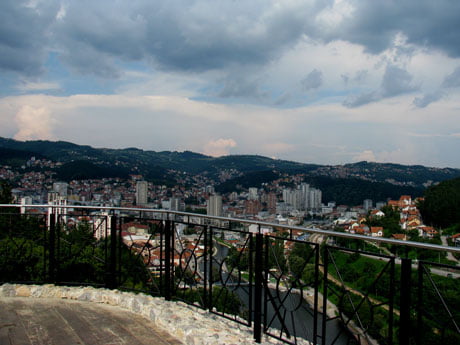
View of Uzice from Old Town deck
POZEGA SERBIA
Mentioned for the first time in 1476, the old town was burned by Ottomans in 1805. Serbian ruler Milos Obrenovic sent the state engineer in order to make settlement plans here. They say that he marked one spot with a stick, tied the rope and made a circle. That is how the town’s circle square came to life with all the houses, shops being built around. It is now the landmark of Pozega. After it was renovated in 2012 the square got the new modern look. It was rewarded as the most successful architectural achievement in the area and proclaimed as the most beautiful square in Serbia.
Pozega is the place where all the important roads meet, but the railway routs as well. According to the 2002 poll, the town itself is inhabited by more than 13.000 people, while the whole municipality is home to about 30.000.
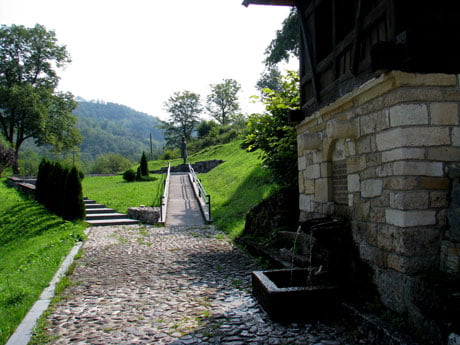
Memorial Complex in Gornja Dobrinja village
My first stop – Gornja Dobrinja village. Jelena from the local Tourism Organization explained that there was the Memorial Complex in Milos Obrenovic’s village, that there still stands the small wooden building called Cardak that he built in 1860 and dedicated to his father Todor (or Teodor). We were talking about the prince’s life while driving about 20 km from Pozega.
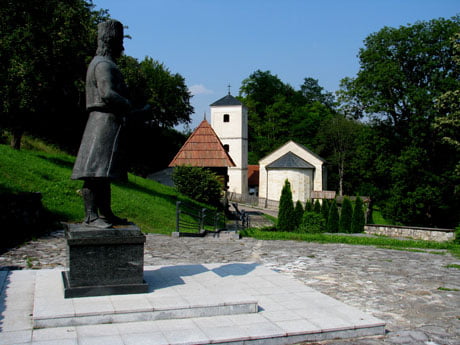
Milos Obrenovic monument
This is what happened: Milos’s mother Visnja remarried. Her new husband was Todor, but she also had children with the former husband Obren. It is believed that Milos – who was Todorovic after his father, according to the old Serbian custom, accepted the surname of his brother Milan, who was an important Serbian governor at the time and whose surname was Obrenovic – after his father Obren.
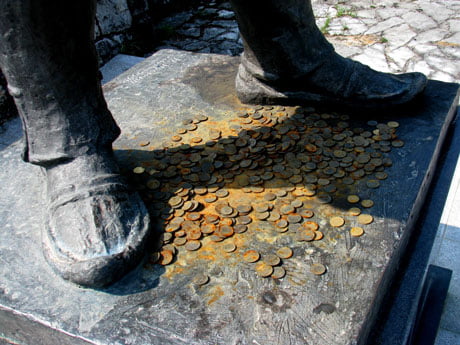
Coins between ruler’s feet
It was interesting to hear that the small Cardak was used during religious festivals. On the right side of the Cardak there is the Saint Apostle Peter and Paul Church that was also erected by Milos in 1822 as his endowment. On the left – prince Milos’s monument. We were puzzled by so many coins between his feet that rain made rusty. (It might be the case of local folk custom to put coins on sacred objects or places for prosperity.)
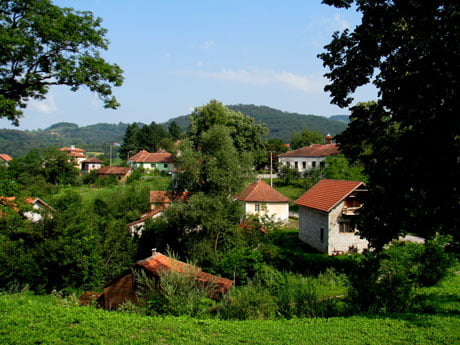
View of the village
The monument itself is such that it feels like the prince is still overlooking the village on the other hill. There also lies the school built by him in 1857. Jelena says that the school is still operational. We went to see it up close, made few photos and greeted the locals. They were sitting in front of the improvised café-post office-store, all in one! I don’t remember seeing flowerpot sitting on the top of the old yellow mail box anywhere else. It was like a reminder that its time has passed long ago!
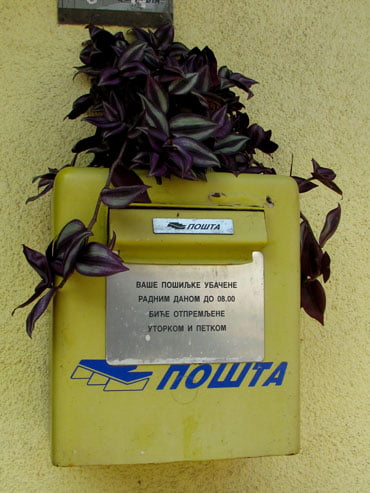
Yellow mail box
While driving back to Pozega, I found out that the Tourism Organization has ordered a replica of prince Milos’s robe to be made. It was possible to imagine a man dressed as the prince greeting visitors to the Memorial Complex. One day, who knows.
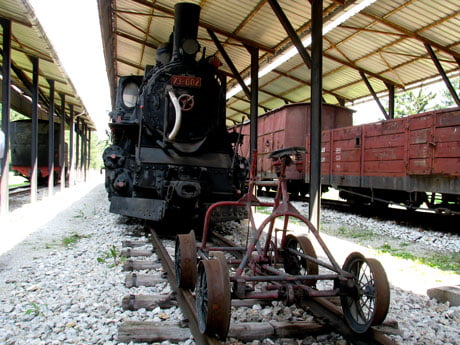
Railway Museum in Pozega
Another stop for us was a visit to the Railway Museum. It doesn’t matter if you are into trains or not, because this is the unique opportunity to see the old iron press that was used for printing dates into train tickets or an old furnace placed in the waiting room. Railway tracks have few great museum pieces themselves. Locomotives are like they stepped out of a black and white movie!
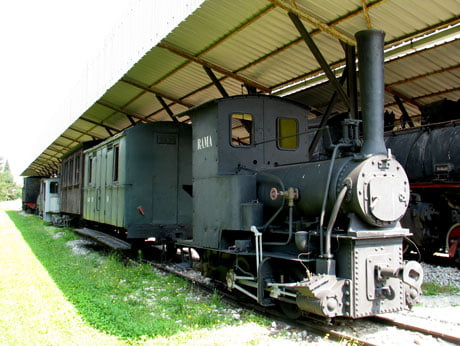
The Rama locomotive
There are four tracks at the Museum, the old railway station and numerous wagons and locomotives. This is where you will come across the famous Cira locomotive or the one called Milan. The latter was made in Balkans in 1882 and bears the name of the former Serbian king Milan Obrenovic. There is also the Rama model, dating back to 1873. They say that it was made in Germany and that there are only two left in the world – one is in Japan and the other here, in Serbian Pozega. The new railway station is near-by and its noise gives a special atmosphere to the place, it seems like it’s still up and running.

Charming old railway station
Weather was nice and we decided to take a break in one of the cafés at the famous circle square, overlooking the prince Milos Obrenovic’s monument in front of the municipality building.

Pozega Square
POTPEC CAVE
It is located in the Potpece village between Pozega and Uzice town, 2 km from the main road. The cave is the most popular for its monumental 50-meter-high entrance that is shaped as a horse shoe. This is the highest cave entrance in Balkans. It is believed that it was inhabited during Neolithic times while various pieces of pots and objects made of stone and deer horns were found.
There is the 555-meter trail for visitors that goes over 700 steps through the cave halls. Underground waters form the Petnica river that bursts out of this huge entrance. The average temperature in the cave is 9 degrees Celsius. Potpec Cave can be visited every day, April to October, 10 am to 4 pm. Entrance fee is 300 dinars for adults (about 2.5 Euros) and 200 (1.5 Euros) for children.

Steps towards the Upper Cave
You get to Potpec Cave in no time when you are coming from Pozega. It takes few more km from the main road, driving up a bit and there it is! There is a parking lot near the Cave. You immediately know that it’s close by because you hear Petnica roaring when coming out of this huge hole in the ground. I walked around, counted 180 steps towards the gate, enjoyed the view from up there, and tried to avoid mosquitoes (I can’t seem to escape them, ever!). The guide Aleksandar appeared soon, accompanying the previous group out of the cave. Tours take place every hour and there can be more or less visitors, depending on the weather etc. It so happened that I was the only visitor at noon, such a privilege!

Mammouth-shaped hole
Aleksandar showed me the Upper Cave while talking about the ancient Neolithic pottery found here, pointing out to the mammoth-shaped hole, and then we went inside the cave corridors. It was humid, rich in stalagmites and stalactites, we had to duck few times only to come out into another great hall. Every hall was richly decorated and many shapes had interesting names. Thus, you will get to visit Snow White and the seven dwarfs, Don Quixote, Eagle on the rock, you will see decorations shaped as a baby, alligator jaws, and there is even a legend about the two dragons. While my feet conquered another small puddle, the guide told me a story about this Hall of Dragons. Two dragons lived here, guarding a magical spring with waters that cured diseases and helped women get pregnant.
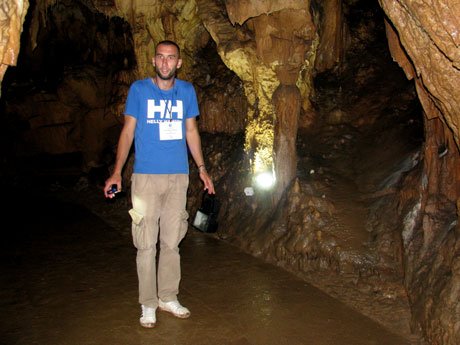
Guide Aleksandar in cave corridors
“When the spring dried up, those dragons turned into stone. And they are still there, look!”, Aleksandar said.
No wonder that such magical stories have always been related to the cave, I mean – just peek into its corridors and you will get the picture! (It should be mentioned that the cave air is believed to be beneficial for your lungs. The place beautiful and beneficial at the same time!)
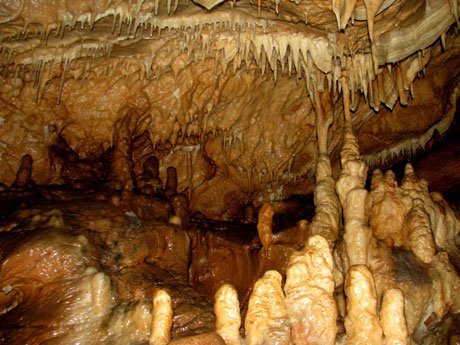
Rich decorations
ZLAKUSA
The village between Pozega and Uzice is well known for its pottery tradition and lots of households are still into the craft. Zlakusa is also abundant in forests, herbs and fish ponds. It is possible to buy ceramic dishes or to participate in making them. There are various pottery related festivals throughout the year here – the International Colony of Art Ceramics in August for instance, or the cooking conquest in autumn.
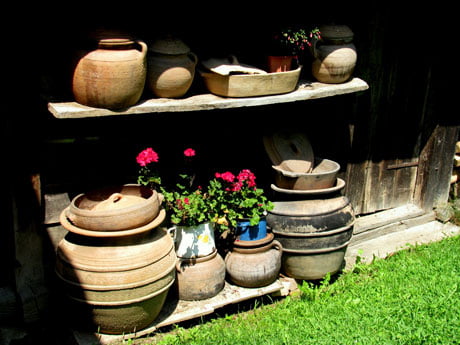
Famous Zlakusa pottery
Stalls with pottery on the main road will be a clear sign that you are near Zlakusa. It’s the same turn you should take for the Potpec Cave. If you go there first, as I did, it will take another kilometer to come back to Zlakusa. And there on one of the hills you will come across the Ethno Park Terzica avlija.
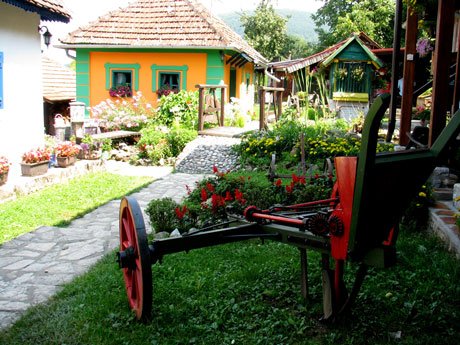
Ethno Park courtyard
This is not the first time I visited the small museum and its beautiful garden always full of flowers and various colors. People usually stop by for coffee and traditional Serbian specialties at the Park’s restaurant, but have in mind that there are two old Serbian houses here, one of which is a century old. One house was once used for everyday activities and there are various traditional objects, along with old school benches displayed at the small museum today. The other served as a guesthouse and it is still furnished accordingly. There are also various traditional small buildings in the garden that were traditionally used for storing milk or household tools.
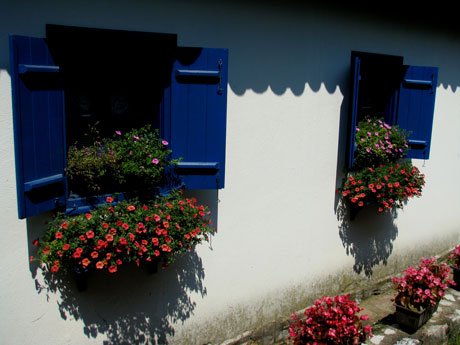
Always full of flowers
UZICE SERBIA
The town was included into the medieval 12th-century Serbian state, being mentioned for the first time in documents in 1329. It was later part of the state ruled by the famous emperor Lazar, but soon occupied by Ottomans. The monument dating back to these times is the old 14th-century fortress standing proudly on the top of the highest hill above the modern town, surrounded by the river from three sides. Uzice was also the main rebel center during the Ottoman rule and an important military strategic base throughout various wars – from Austria-Turkish to the WWII.
Serbian king Aleksandar Obrenovic laid the foundation stone in 1899 for building the first hydroelectric power plant on Djetinja river. The town thus got the electricity and its streets were illuminated a year later, which soon resulted into economy and cultural development.
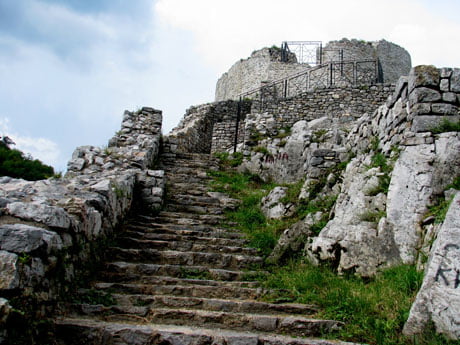
Old Town tower
It is not possible to drive along the main road by the Uzice town and not to notice the grand walls of the Old Town on the hill. It looks inaccessible, but for all of you who are not into hiking, you should know that the Old Town is reachable by car. You can easily find your way there since there are street signs all over the city. And when you get there, you will see how worth it was to come and have a beautiful view of the entire valley! It makes you think though. Just imagine, this is the place where fierce battles took place 7 or 8 centuries ago. Who knows what these walls have witnessed throughout history and they are still in the same place so far ahead in the future. You just have to be awed!
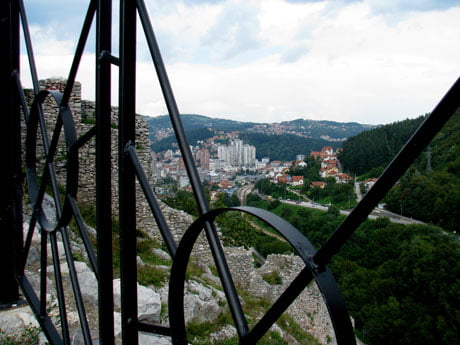
Uzice Serbia Things to do
The first 14th-century reliable sources say that the fortress belonged to the wealthy Vojinovic family. After that it was taken by one of the regional rulers Nikola Altomanovic who was defeated by the Serbian emperor Lazar and imprisoned here in 1373. These walls were often destroyed and rebuilt afterwards. In the upper part of the fortress, there was once a semicircular tower, small buildings for military and other equipment were placed at the center, while the lower part of the fort had another tower linked to the river below.
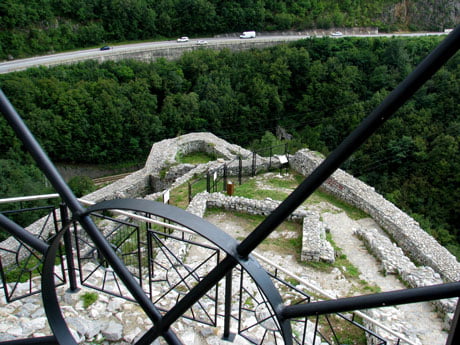
Centuries-old walls
You can also have a great view of the Old Town from the new Observation Deck “at the cross” that is situated on the mountain peak directly opposite the fort. This won’t be hard to find, just drive from Uzice center towards Zlatibor for another 10 kilometers and turn left when you come across the first gas station on your right. I was honored to be taken there by the Head of the Regional Tourism Organization of Western Serbia Miroslav Radjen who gave me all the info and showed me around.
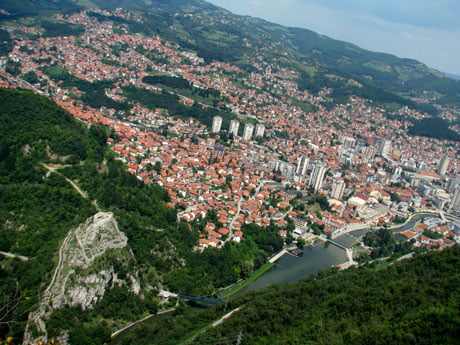
Observation Deck view
It should be mentioned that there are folk stories related to this fortress, as to many others in Serbia, regarding the 15th-century Greek princess also known as the Damned Jerina who was married to Serbian despot Djuradj Brankovic. Her rule was cruel and, according to legend, she forced pregnant women to build fortresses while throwing their children into rivers. That is how Djetinja got its name (derived from dete in Serbian, meaning – a child). Never the less, Uzice fortress was here long before that and went through so much already before Jerina appeared on the Serbian political scene.
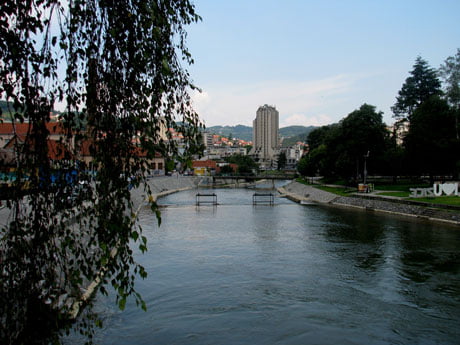
City Beach on Djetinja
Djetinja river comes from Tara Mountain and flows into the West Morava river. Only few kilometers from the city center one can reach the beginning of its gorge. It is proclaimed as the place of special natural importance with many endemic species. For instance, this is where one can find the most abundant number of butterfly species in Serbia. The gorge is full of beautiful slops abundant with fish, but part of the river closer to town forms a City Beach, crowded by swimmers in the summer. Thus a must-see place on Uzice Serbia things-to-do list.

The first Tesla’s power plant in Serbia
Still, the thing that genuinely made Uzice popular was the power plant! Renowned Serbian professor Djordje Stanojevic gave an assessment in 1898 that Djetinja river was strong enough to support the hydroelectric power plant according to the principles of the great Serbian scientist Nikola Tesla. The streets of the town got the electricity and the local industry got the power for its engines. Overwhelming equipment for building the plant was brought from Vienna. It was dragged by ox-carts for the last few hundred kilometers through muddy roads. The plant now houses the Museum of Technology.
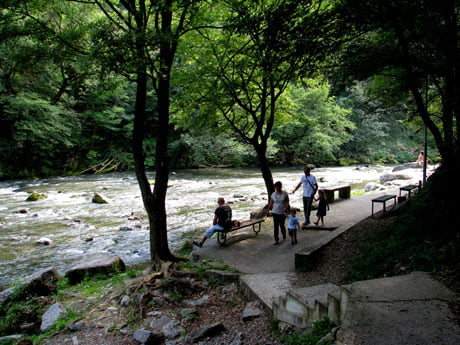
Djetinja river
There are few more stops to do in Uzice. Jokanovic’s House dates back to the mid-19th century, it was once owned by wealthy merchants. Buildings of the National Museum and the famous High School from 1838 are also interesting to see, as well as the vast City Square. And you will also have to try the so-called komplet-lepinja (buns filled with eggs and kaymak, heated in the oven with sauce poured above). You can find all sorts of traditional specialties typical for Western Serbia in Uzice, but the komplet-lepinja, they say, actually came from this town and “the only real one” is to be tasted here. Locals don’t like the fact that restaurants in the region fill these buns with prsuta or cevapi, because, they say, “that’s not the real dish”. You will probably be introduced to the Shuljaga Bakery for a taste of this Uzice’s speciality (for about 1.2 Euros for a bun and a small yogurt), while, they say, they are trying not to have it that often themselves, “if they want to stay fit”.

Traditional buns going in the oven
Should I mention that, after all these tasty buns and other Western Serbia specialties, I came home gaining a kilo or two? Such hospitality and such great cuisine, couldn’t help it!
Next destination – Mokra Gora and Kosjeric
The full Weekend In Serbia section
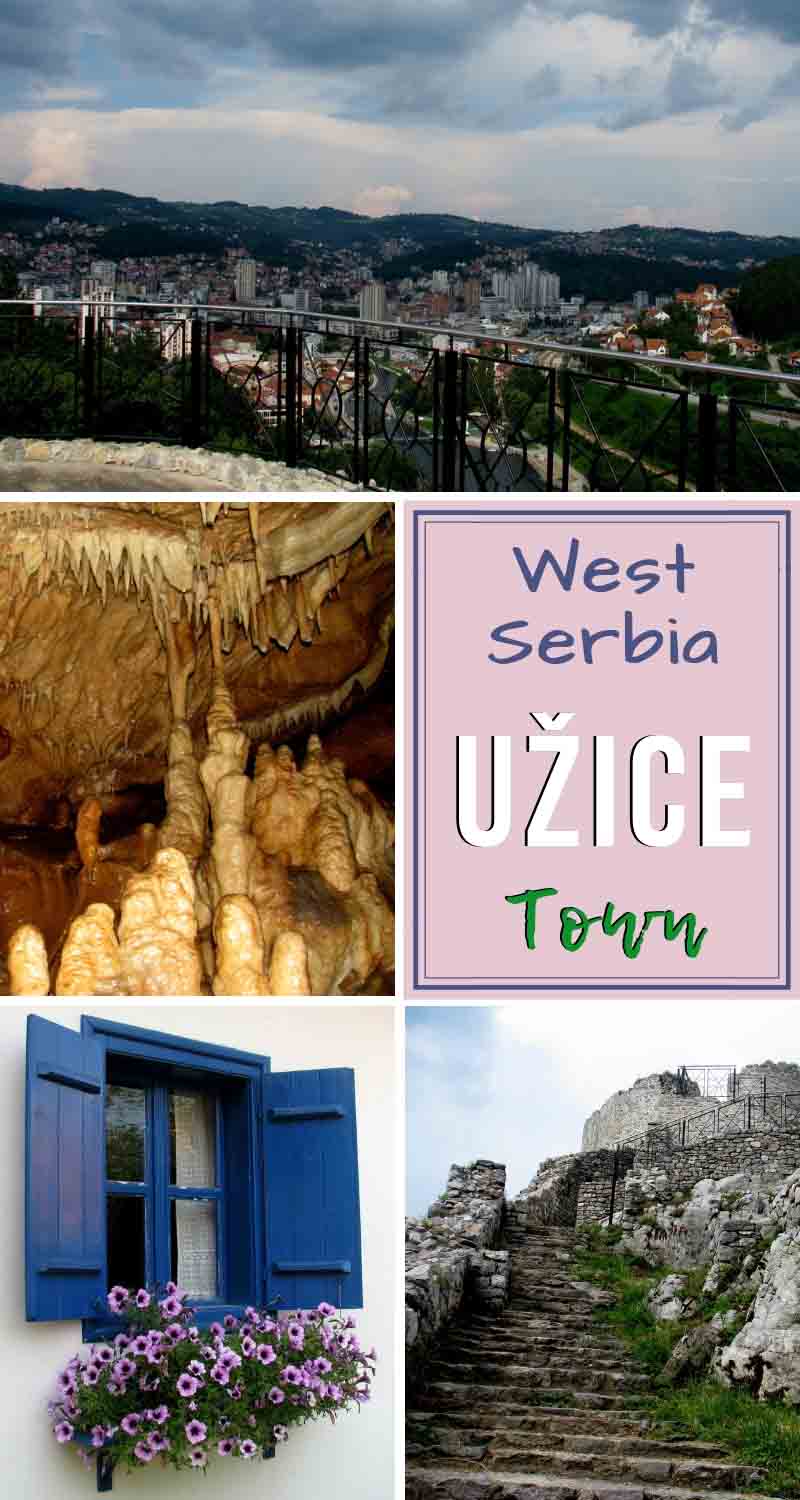



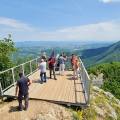

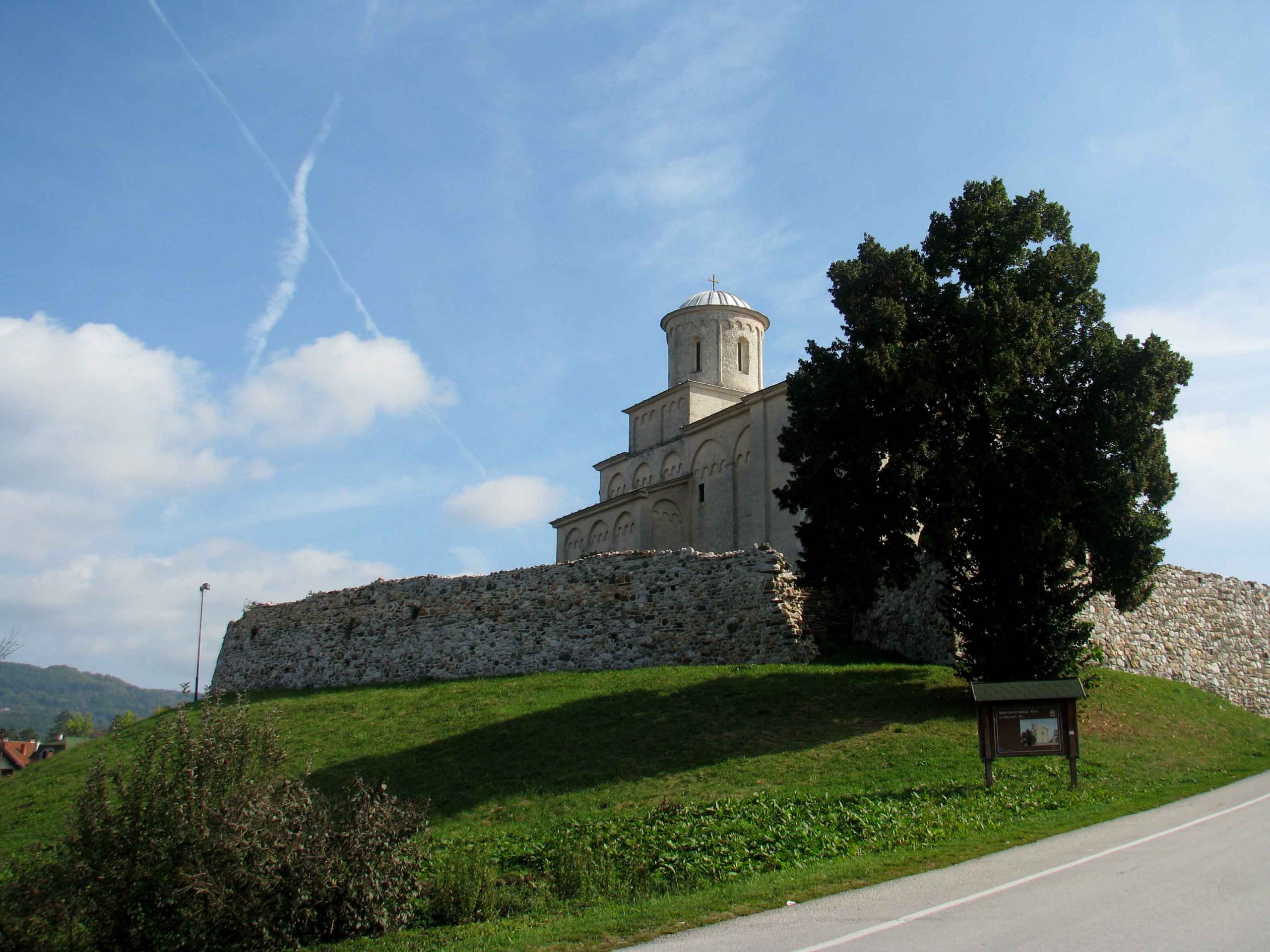
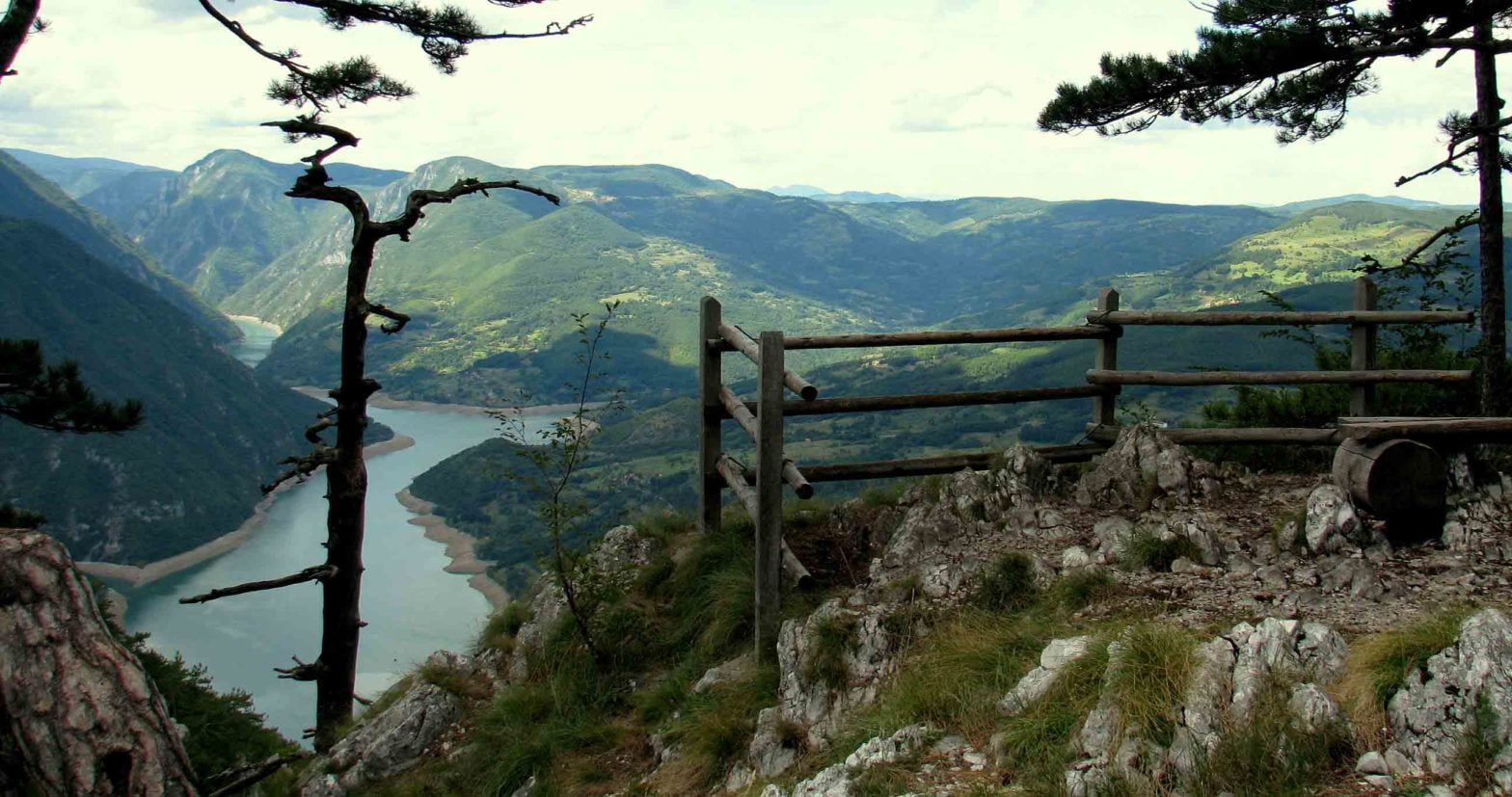
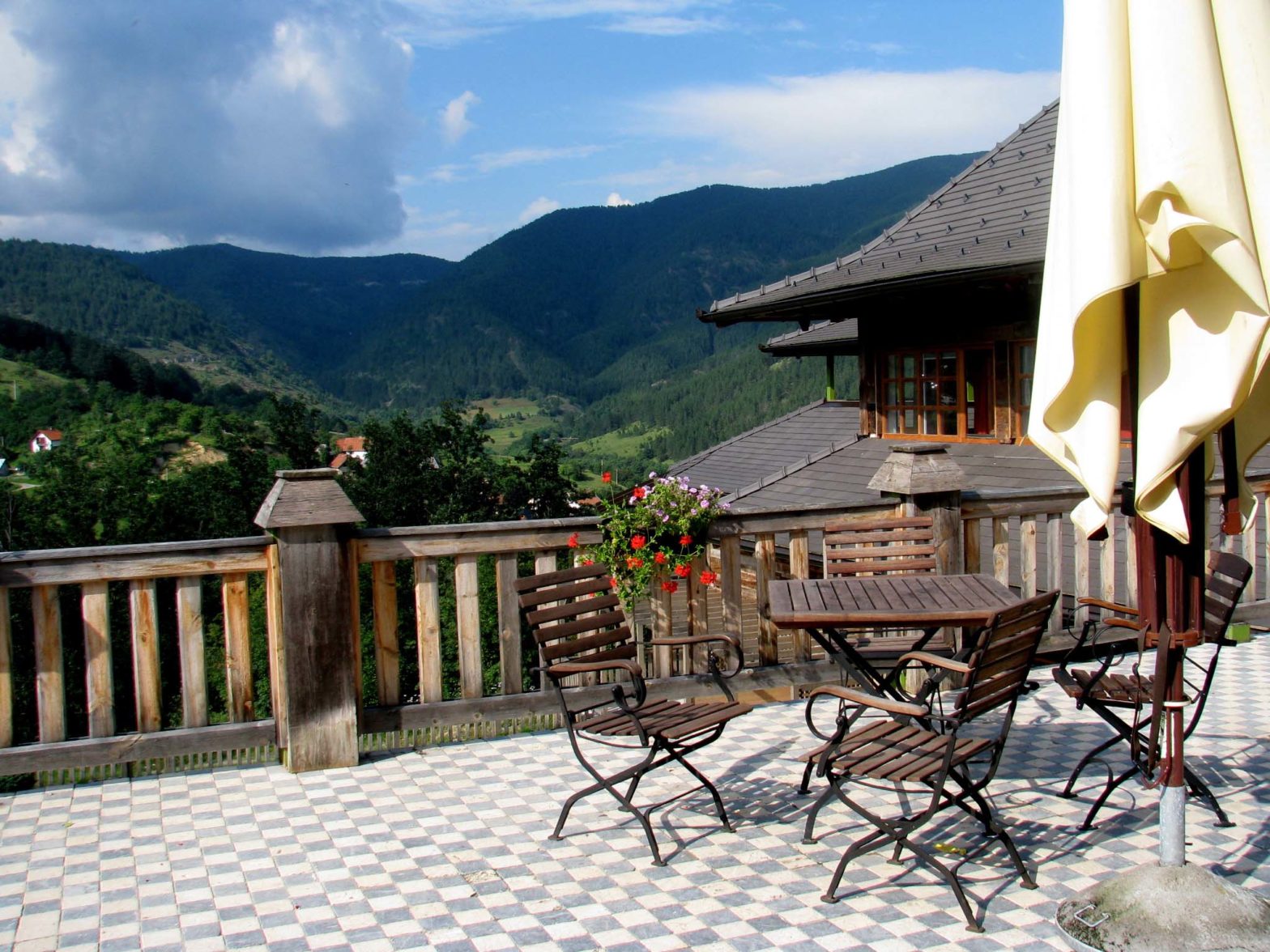


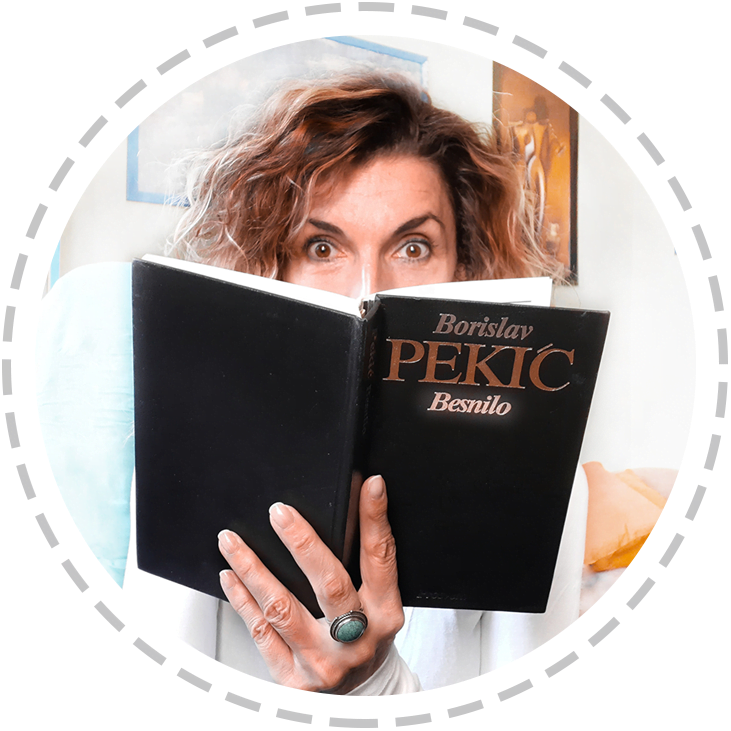
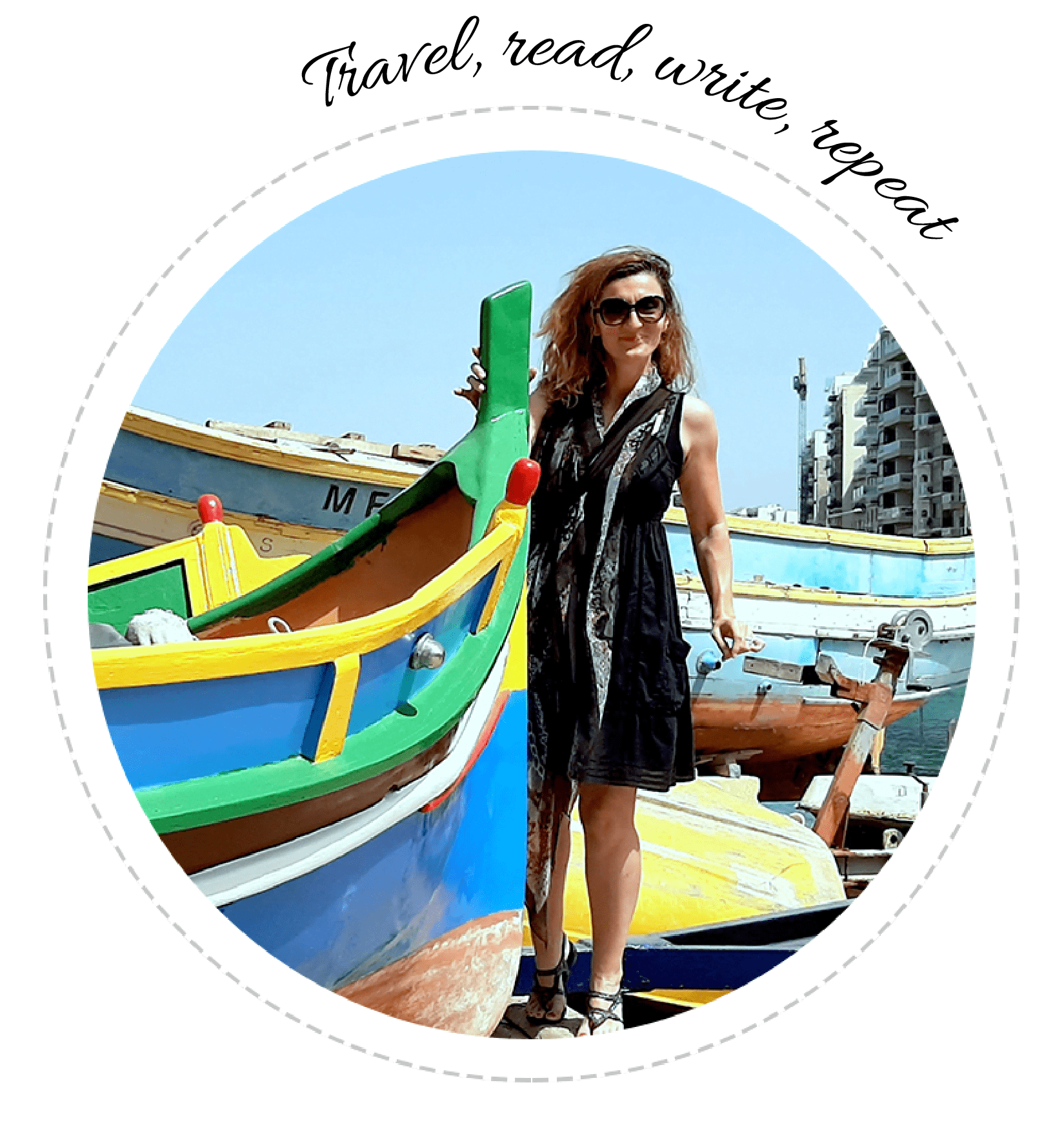

Jojo
I’m really curious about the coins by the statues feet now. There is so much history in these cities you shares with us. You can tell just be looking at the beautiful architecture. Thank you for the guide and information!
Danijela WorldGlimpses
Hey, thank you! So glad that the post made you curious about this part of the world.
Yep, true, there’s so much history here, but also – the nature is beautiful! One just has to be here in person. Thanx again! <3
Chris
Great piece! The indefinable charm of Balkans. Being a Greek, I always wanted to have a road trip up north. Haven’t managed so far, but haven’t given up on the idea either.
Danijela WorldGlimpses
You should definitely do it. Taking a road trip is the best way to go around Serbia and the western part of the country is so abundant with lush nature, greenery and waters that one just has to be stunned. 🙂
Cheers to you and your beautiful country, Chris, thank you! <3
Nicole Brewer
Wow Serbia looks like a beautiful country! After visiting the Czech Republic this summer, I’m intrigued to see more of Eastern Europe. The caves and rail museum both look like interesting places to visit.
Danijela WorldGlimpses
It’s Central Europe, and you might even take a trip around all the Balkan countries. Just make sure that there’s enough time for everything to see. 🙂
In Serbia, Belgrade is a must and then a road trip to where ever your preferences take you – waterfalls, caves, mountain peaks, powerful rivers, Roman ruins, medieval castles, wine routes or more traditional surroundings. So much to see! <3
Pau
So much to do! It’s unbelievable! Serbia on my bucket list now 🙂
Danijela WorldGlimpses
Oh, it should be! Let me know if you need any help. 😉
Anshula V
Serbia seems like such a beautiful and charming country (I love that you covered it since I barely ever heard about it). I love how historical this place is! And reading the folk story was especially interesting.
Danijela WorldGlimpses
Feel free to browse around the Weekend In Serbia blog section, there’s more about the country. 😉
Thank you, so glad I was able to bring something new and interesting. 🙂